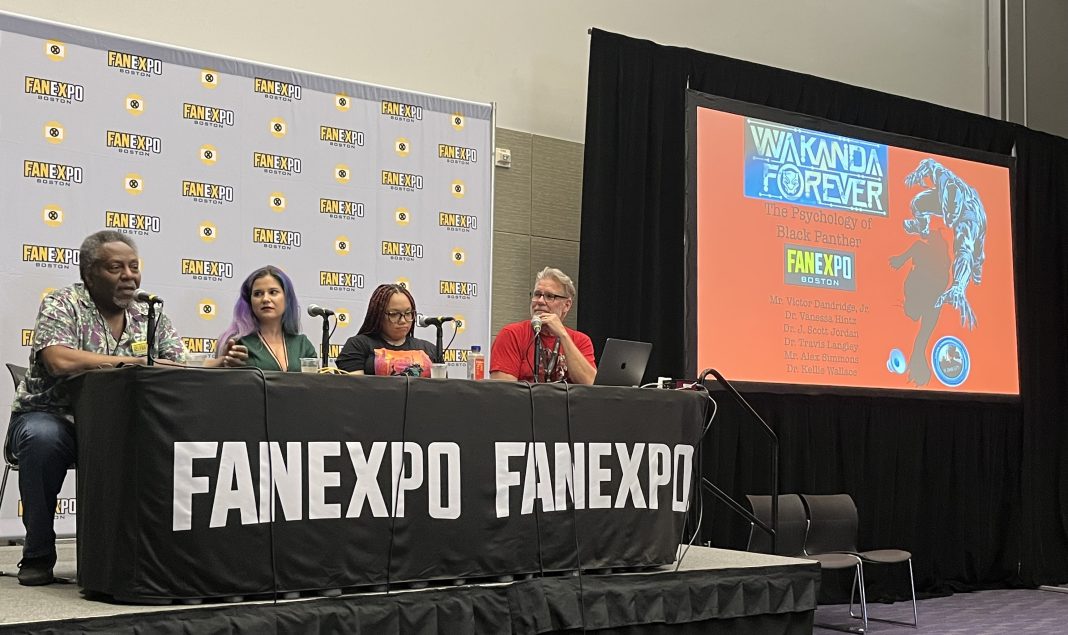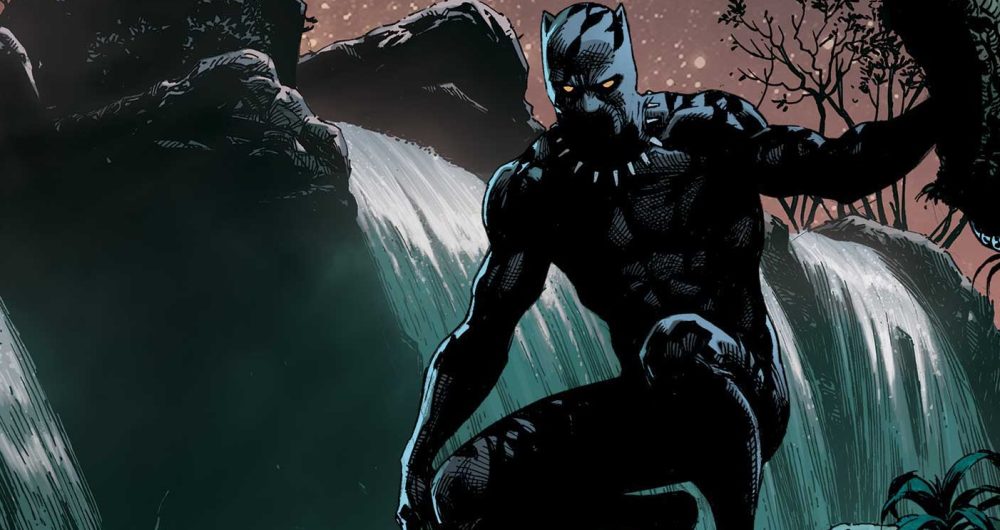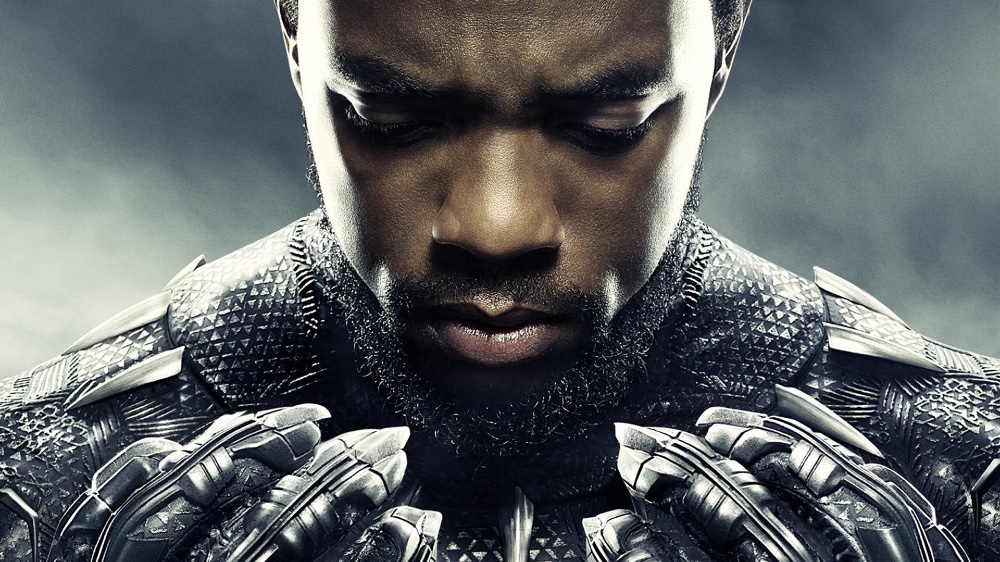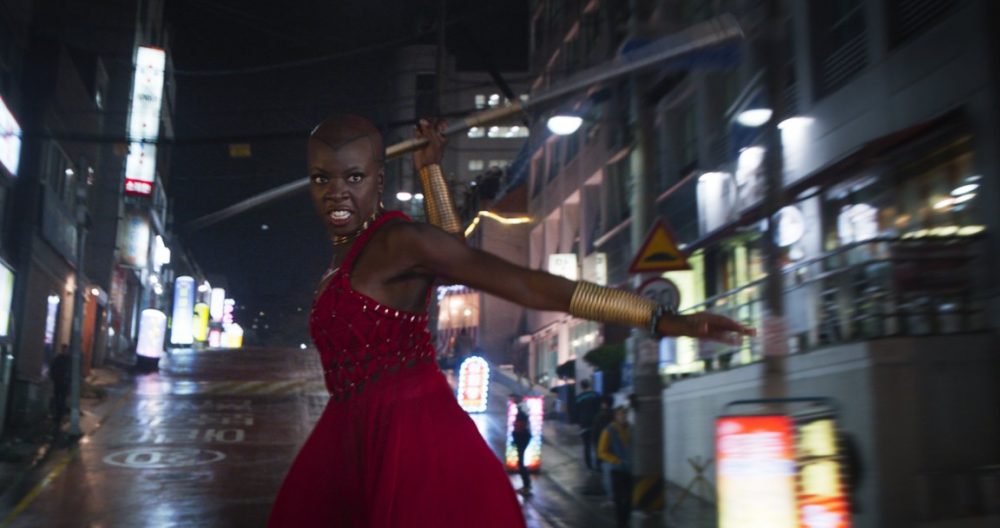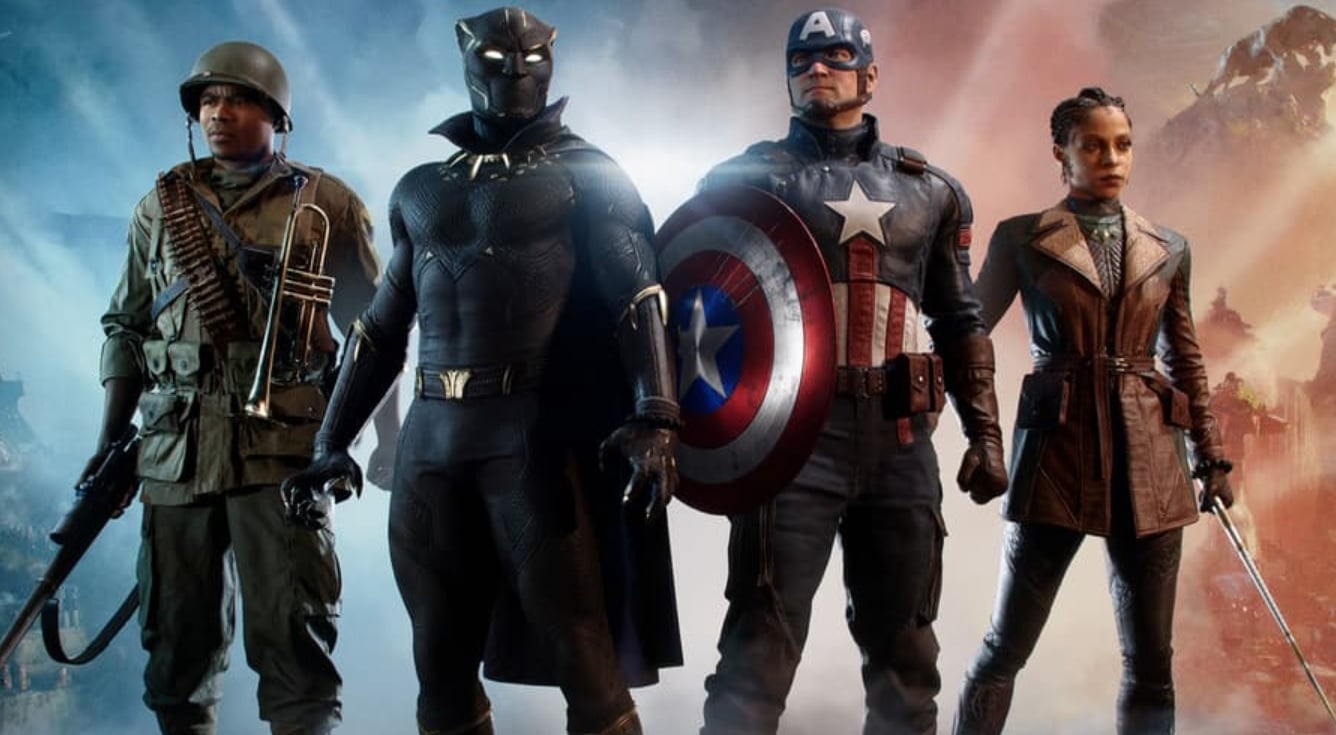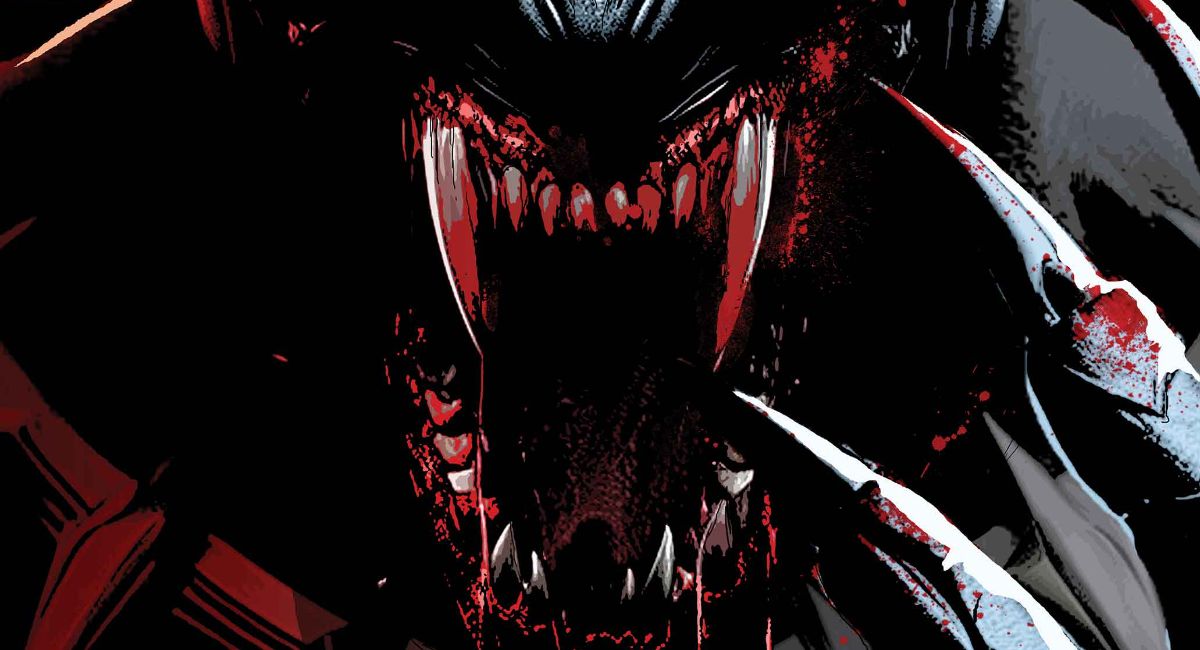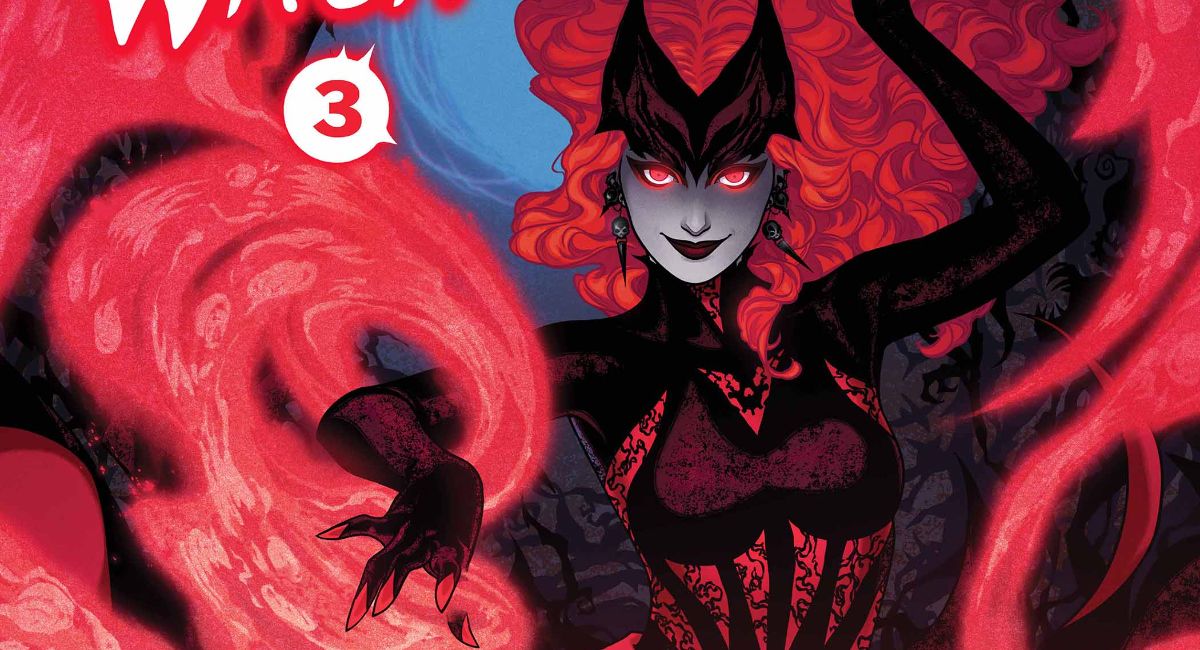Black Panther, co-created by Stan Lee and Jack Kirby, has been a beloved character for more than 50 years. Due to the efforts of talented Marvel writers and artists, appearances in video games and cartoons, and his renowned portrayal by the late great Chadwick Boseman in the 2018 film, T’challa and his world of Wakanda have impacted the hearts and minds of many. This love of the character was well on display at the Fan Expo Boston panel “Wakanda Forever! The Psychology of Black Panther.”
With a room packed full of excited audience members, Dr. J. Scott Jordan was joined by fellow psychologists Dr. Kellie Wallace and Dr. Vanessa Hintz, and Alex Simmons, co-editor of Black Panther Psychology: Hidden Kingdoms to talk about why the character has resonated with so many. First, the panel talked about their favorite Black Panther memory which ranged from Michael B. Jordan taking his shirt off in the film, Chadwick Boseman’s regal performance, to the beauty of the craftsmanship put into the movie. Dr. Jordan had done similar panels to “Wakanda Forever!” in the past, including with his fellow panelists, and appreciated the love it generated.
Afterward, each of the panelists then took an aspect of Black Panther they wanted to talk about to the audience through the lens of their expertise. First Alex Simmons talked about the significance of the creation of the character. In the 60s and early 70s when he was growing up there weren’t any Black superheroes in the panels of comics during a time of racial injustice. He then went on to thank Jack Kirby and Stan Lee for creating the character and putting him on the page of the comics when they did. ”At the same time they did that there was a Black soldier in Sergeant Fury and the Howling Commandos, Gabe was his name,” Mr. Simmons said. “When the first issue of that book came out and was shipped along with Spider-Man and some of the other books to the South, all the books that were in the same packaging with that book were returned.” Injustice towards Black comic characters was not just an external facing. Mr. Simmons noted how internally at Marvel Jack Kirby originally wanted Black Panther’s cowl to be open at the mask but was told to cover it up.
Black Panther later got his own 12-issue storyline called “Panther’s Rage” from writer Don McGregor. Mr. Simmons, who was friends with Mr. McGregor, got to be a peripheral part of the creative process, discussing story ideas with the writer and creative designs. Years later, when it came time for Mr. Simmons to work on Black Panther Psychology: Hidden Kingdoms, he credited his experience as a writer and storyteller and experience with McGregor that really helped him to be able to go into why the Black Panther character was so impactful on the public. “Just by looking around this room, you represent exactly what happened,” Mr. Simmons said. “Because it’s not just the Black public, or females or males. It’s a wide range of people. And if nothing else, that affection for that project, starting 30 plus years ago, says that, that’s what we all are, first and foremost, is people.”
Dr. Vanessa Hintz, who also contributed to Black Panther Psychology: Hidden Kingdoms as an author, talked about Erik Killmonger, as portrayed by Michael B. Jordan, in the 2018 movie. In the book, she talked about Blackness, the process of becoming Black, and Black racial identity in comparing T’Challa and Killmonger, though here she focused on Killmonger. Through psychological theory, she mentioned that there is a process that racially minoritized or non-White, folks go through in coming into their racial identity, however, she made note that not everyone goes through it in the same way.
When people of color are first coming into their racial identity they are inundated with majority values. “We feel like White is right,” Dr. Hintz said. “That’s what I want to be. I want to align with mainstream values. I don’t want to be different. What then happens is something that triggers in our mind that [says,] “Okay, but I’m not white. So I’m not going to be afforded those same values.” Continuing, she said that upon having this realization people can move into a space called dissonance which can result in a shift in mindset. “So, instead of me aligning with mainstream values, now, I’m 100% pro-Black, all Black, all the time, everybody else can kick rocks.”
This mindset is where we find Killmonger in the Black Panther film. In helping explore Killmonger’s mindset Dr. Hintz then talked about how the character’s thought process is rooted in reality for Black Americans like herself, which is why many can find empathy with him. “For Black people in America, we know what it’s like to feel like how he felt,” she said. “We know what it’s like to feel like everything is taken away from you like you have no control like people don’t value you like you’re not given what you’re owed, you’re not given what you’re worth.”
Dr. Kellie Wallace talked about the women of Wakanda as represented in the 2018 movie and how empowering they were, as exemplified by characters such as Shuri (Letitia Wright). “Shuri is my favorite. She’s the youngest. She is the smallest. She is by far the most powerful [character] in this movie because of knowledge, right?” she said. “She understands how the soft sciences work. She understands Vibranium. She also understands the larger systemic issues at play and how this technology can be used to both help and hurt people.” In talking about the female characters in the movie, Dr. Wallace mentioned throughout the film that the women of Wakanda fought for justice, while the male characters fought for power. She then gave a specific example of Okoye (Danai Gurira) being willing to kill her love W’Kabi (Daniel Kaluuya) to save Wakanda while he was willing to give it up for greed, power, and money. “To see Black women in this role, they are the pinnacles of power and the strength and justice in this movie,” she concluded. “It’s just beautifully done.”
Dr. J. Scott Jordan chose to talk about the psychological idea of assumption using a few frames from a Christopher Priest Black Panther story. Dr. Jordan, who has gotten to interview Priest, mentioned how contemporary neuroscience clearly indicates every day we’re living on our memories; an example he gave is that by using our memories we fill in what another person might say or do next or where a person might take a step after leaving the panel.
He then read a few panels from the Priest Black Panther story in which CIA Agent Everett Ross is sitting with Queen Divine Justice, a descendant of the Jabari Tribe. Both are in a crowded monorail in Wakanda for the first time. The panels first showcase Ross’ inner dialogue, in which he views the diversity around him as something that could possibly explode. It then switches back to Queen Divine Justice who is tearing up due to being surrounded by the beautiful Black faces around her and riding into one of the world’s most technologically advanced cities built and occupied by Black people. “What I love about this bit is you got two people just doing their life on a monorail somewhere,” Dr. Jordan said. “And this two-page passage reveals the world of assumption that they’re both carrying with them every moment of the day.”
Before turning to the Q&A portion of the panel, Dr. Hintz remarked on Agent Ross’ perspective in the comic that diversity was dangerous. She elaborated that she thinks the idea that difference is something to be feared is what helps to perpetuate and keep the systems of inequity that we have in our world going. “I think that until we collectively understand that difference is just different; it’s not deficient; it’s not better; it’s not worse; it just is. We’re going to continue to maintain these systems of isms and power.”
Through Dr. Hintz and the panel’s remarks, and the packed convention room, it was clear the impact Black Panther and the world of Wakanda have had on our culture. Whether in cartoons, on film, or in the panels of a comic book, this is a character whose adventures show us that diversity in media is of benefit to us all.
Want the latest convention coverage from The Beat? You can find it here!


